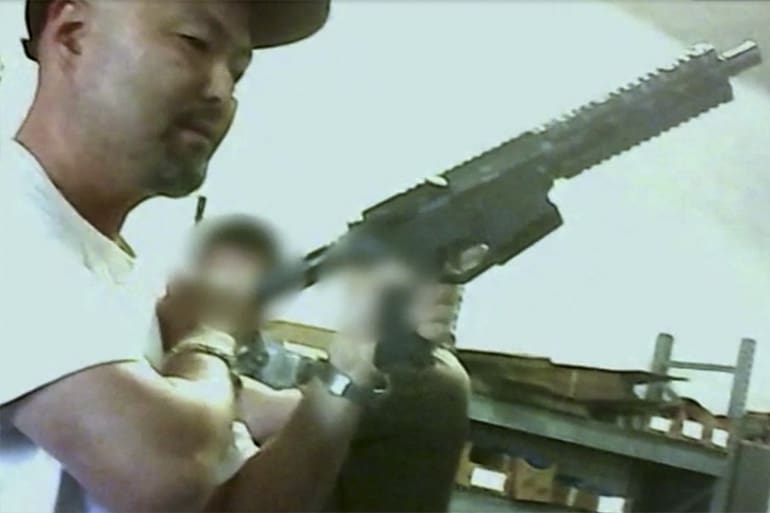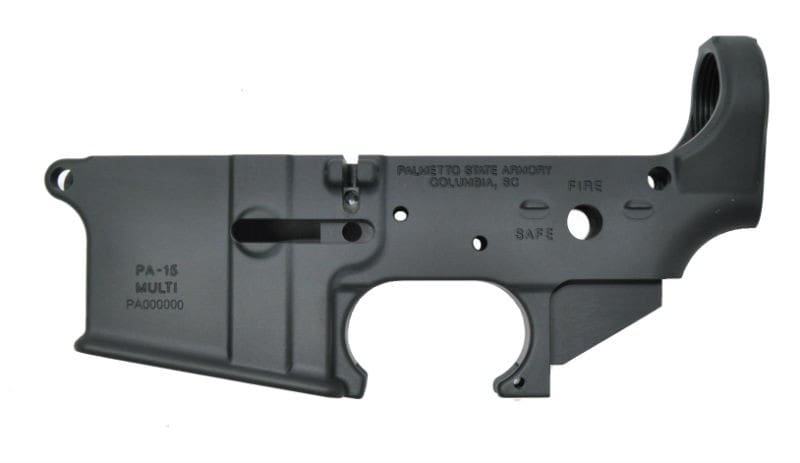
The ATF's Definition of an AR-15 Lower as a 'Firearm' Is In Serious Trouble - The Truth About Guns
First, credit where it’s due. CNN’s Scott Glover has managed to turn out an excellent article about a fairly arcane aspect of guns and firearms law while getting the details right. That’s a notable feat for legacy media these days. Read the whole thing here. With that out of the way, the...
 www.thetruthaboutguns.com
www.thetruthaboutguns.com
The ATF’s Definition of an AR-15 Lower as a ‘Firearm’ Is In Serious Trouble
BY DAN ZIMMERMAN |
OCT 12, 2019 |
107 COMMENTS

Courtesy ATF and CNN
First, credit where it’s due. CNN’s Scott Glover has managed to turn out an excellent article about a fairly arcane aspect of guns and firearms law while getting the details right. That’s a notable feat for legacy media these days. Read the whole thing here.
With that out of the way, the criminal prosecution — aborted though it was — that Glover has written about is worthy of note and could make the ATF’s job of regulating AR-15 sales going forward extremely difficult. CNN’s article is titled, He sold illegal AR-15s. Feds agreed to let him go free to avoid hurting gun control efforts.
Here are the particulars. A Southern California man named Joseph Roh produced 80% AR-15 lowers and complete rifles, some of which he allegedly sold without a manufacturer’s license, and some allegedly to prohibited persons. At least a few of the guns he sold were used in crimes including an 80% lower that was used as the basis for a rifle build used in a 2013 spree shooting in Santa Monica.
The ATF had been watching Roh for years and mounted a sting operation against him in 2014. They sent undercover agents into his south LA machine shop where he was holding what were basically “build parties” where customers finished lowers and assembled completed rifles.
Roh was eventually arrested and charged with running an unlicensed firearms manufacturing operation. But none of that is the interesting part of the story.
The aspect that’s worthy of your attention — and is no doubt giving the ATF nightmares — is the argument that Roh’s attorney made in successfully defending his client.
As you probably know, the only part of an AR-15 that’s legally considered a firearm is the lower receiver. That’s the part that’s serialized and requires a background check to purchase (unless you buy an 80% lower and finish it yourself, but that’s another story).

AR-15 stripped lower receiver (courtesy Palmetto State Armory)
Joseph Roh was smart enough to hire a good attorney, Gregory Nicolaysen. Nicolaysen did his homework and actually read the federal statue that lays out what constitutes — legally speaking — a firearm. When Roh’s case came to trial in 2018 . . .
And neither does any other AR-15 lower receiver. Where most firearms have a monolithic receiver that meets the definition under federal law, an AR has a split receiver, an upper and a lower. Neither component, strictly speaking, meets the definition of a frame or receiver that is explicitly laid out in the law.Nicolaysen argued that the definition of a receiver under the relevant federal code differed in various ways from the AR-15 component Roh was accused of manufacturing.
Under the US Code of Federal Regulations, a firearm frame or receiver is defined as: “That part of a firearm which provides housing for the hammer, bolt or breechblock, and firing mechanism, and which is usually threaded at its forward portion to receive the barrel.” (emphasis added)
The lower receiver in Roh’s case does not have a bolt or breechblock and is not threaded to receive the barrel, Nicolaysen noted.
In effect, Nicolaysen argued that the ATF’s interpretation of federal law that they’ve been using to deem AR-15 lowers as legal firearms is wrong…and has been since, well, forever.
Roh’s case was heard in a bench trial (at his option) in which only the judge hears the evidence and renders a verdict. US District Court Judge James V. Selna deliberated for a year and then wrote a tentative order in April.(Nicolaysen) called the decision to classify it as a firearm nonetheless, the result of “secret, in-house decision-making.”
Nicolaysen accused the ATF of abusing its authority by pursuing Roh based on his alleged violation of a policy “that masquerades as law.”
In his order, Selna agreed with Roh’s argument that the ATF’s definition of an AR-15 lower as a firearm is faulty.
That, no doubt, set off alarm bells from LA to DC. If the ruling were allowed to stand, that would set a very inconvenient precedent, one that would make AR-15 lowers like any other part of an AR platform rifle…just another gun part that could be made and sold through the mail to just about anyone. No serial number or background check needed.
The ATF couldn’t let that stand, so prosecutors reached a plea deal with Roh.
And there would be no legal precedent.Selna did find that Roh was guilty of selling completed firearms without a license, subjecting him to a possible prison sentence.
Following Selna’s tentative order, the prosecution and defense agreed to a deal in which Roh would plead guilty to the charge against him, but would be allowed to withdraw that plea if he stayed out of trouble for a year. Prosecutors would then dismiss the case. If Roh abides by the deal, he will have no criminal conviction and serve no time behind bars.
They basically let Roh walk in order to preserve the current fiction under which the ATF regulates AR-15 sales.Sources familiar with the agreement said prosecutors wanted to strike a deal in order to prevent Selna’s order from becoming permanent, drawing publicity, and creating case law that could hamper ATF enforcement efforts.
As for “drawing publicity,” CNN has done a good job of that with their story. And, as Glover points out, Roh’s case wasn’t the first time a similar argument had been successfully used.
You can read the court’s findings in the Jimenez case here. That case was dropped, too.Federal law enforcement officials — and members of Congress — have been on notice about a potential problem with the language in federal gun law as applied to AR-15s since at least 2016.
In July of that year, prosecutors in Northern California abandoned a case against a convicted felon named Alejandro Jimenez after a judge found that the AR-15 lower receiver he was accused of purchasing in an ATF undercover sting did not meet the definition of a receiver under the law.
The ruling and subsequent dismissal drew little notice but prompted a letter to Congress from then-US Attorney General Loretta Lynch. She advised lawmakers that the judge’s decision was not suitable for appeal and that if ATF officials believed the definition should be changed, they should pursue regulatory or administrative action.
So the government has known that the ATF is using a faulty interpretation of federal law to regulate the sale of AR-15 lowers for decades now. And the deal they cut in the Roh prosecution doesn’t change that in the slightest.
It certainly does.“AR-15s, as we speak today, do not have a receiver by the definition of the existing law and that’s a huge issue,” (Nicolaysen) said. “It shows that the laws are obsolete and they’re out of sync with the realities of today’s firearms market.”
(Adam) Winkler, the UCLA law professor, offered a similar assessment.
When he was first informed of the judge’s tentative order by a CNN reporter, Winkler said, “I thought the logic was crazy.”
But after reviewing the order and several filings in the case at the request of CNN, he said Selna’s rationale appeared legally sound.
“It does seem like there is problem,” Winkler said.
The only way to fix this is through new legislation. Congress alone can change federal law to define a frame or receiver in such a way that AR-15 rifles are covered. That’s why Attorney General Lynch wrote the letter she did back in 2016, suggesting a legislative fix. But Congress apparently shrugged that off.
TTAG has reached out to Gregory Nicolaysen for comment on the case, but a call and a text haven’t been returned yet.
Under a legal principle called Chevron deference, federal courts give regulatory agencies like the ATF wide latitude in interpreting and enforcing Congress’s often poorly-written laws. However, when the agency’s interpretation is so clearly at odds with the underlying language of the law, even Ninth Circuit judges can’t overlook the problem.
The argument that Roh’s attorney employed to get his client a very good deal will no doubt be used by defendants in future prosecutions of the same kind. It could also be used by other attorneys to try to reverse previous convictions of those found guilty on similar charges.(Nicolaysen) asked the judge to consider recommending that then-US Attorney General Jeff Sessions conduct a review to determine whether there were any similar cases pending around the country or past convictions “sustained on the basis of ATF policy, rather than law.”


